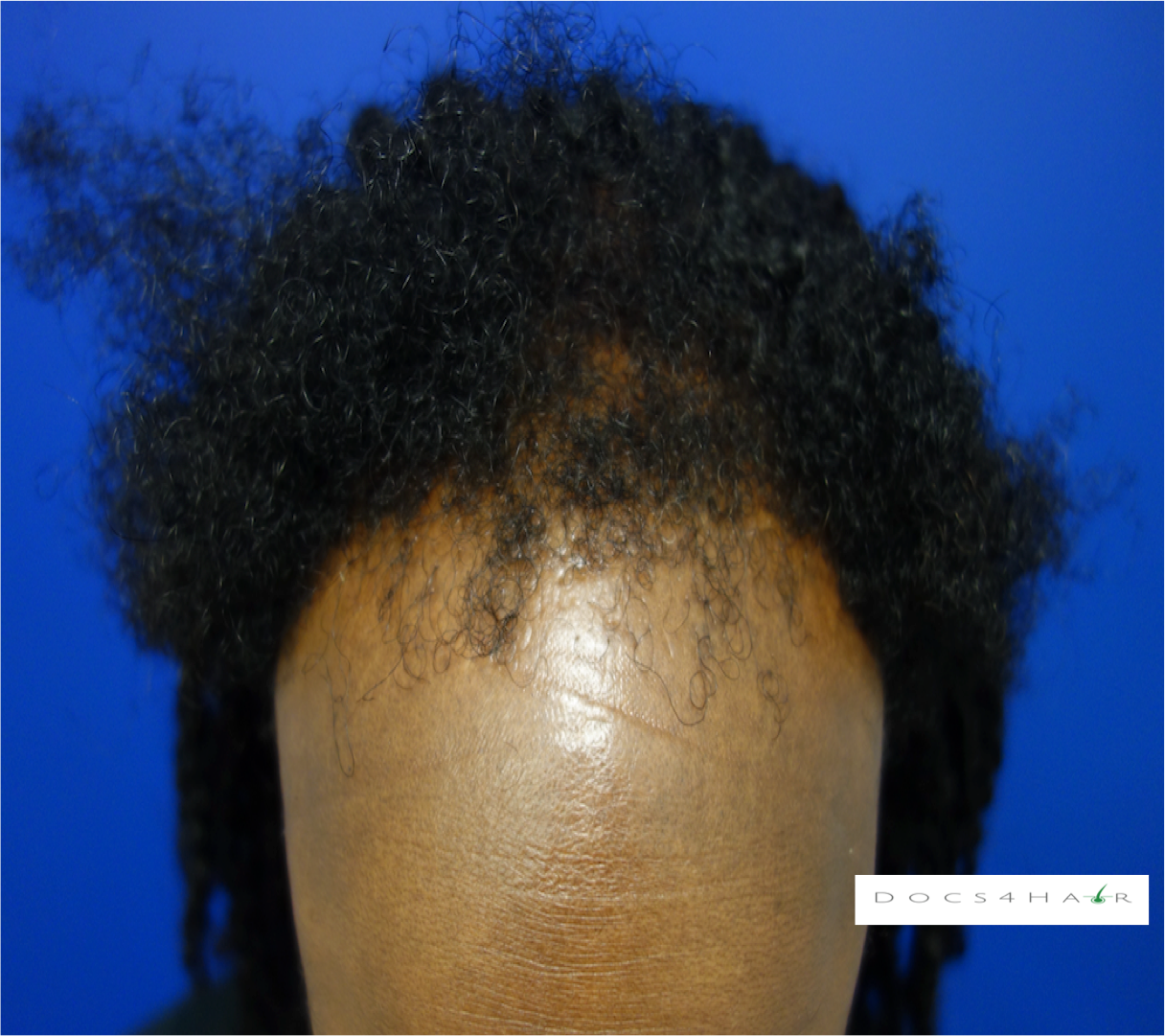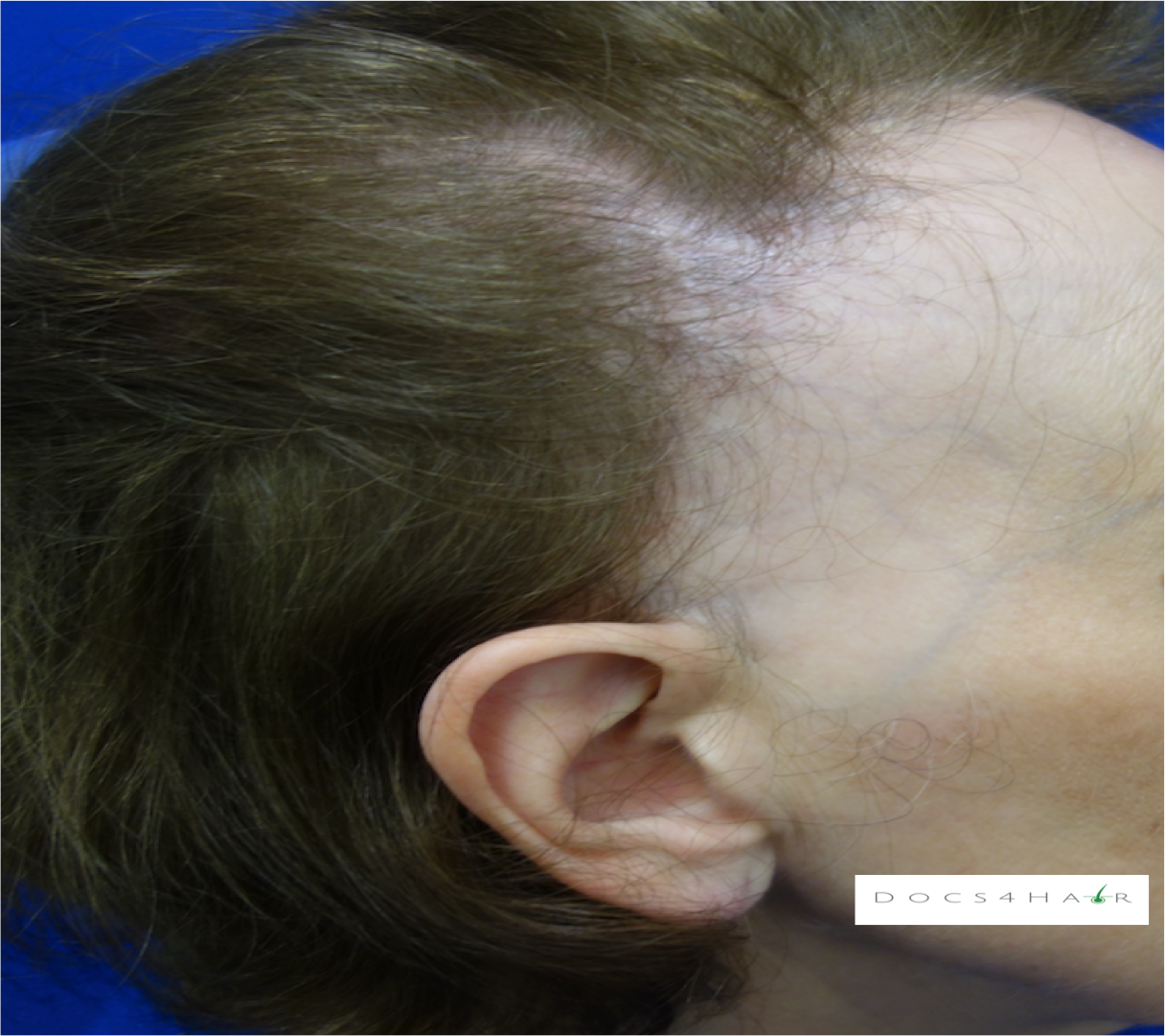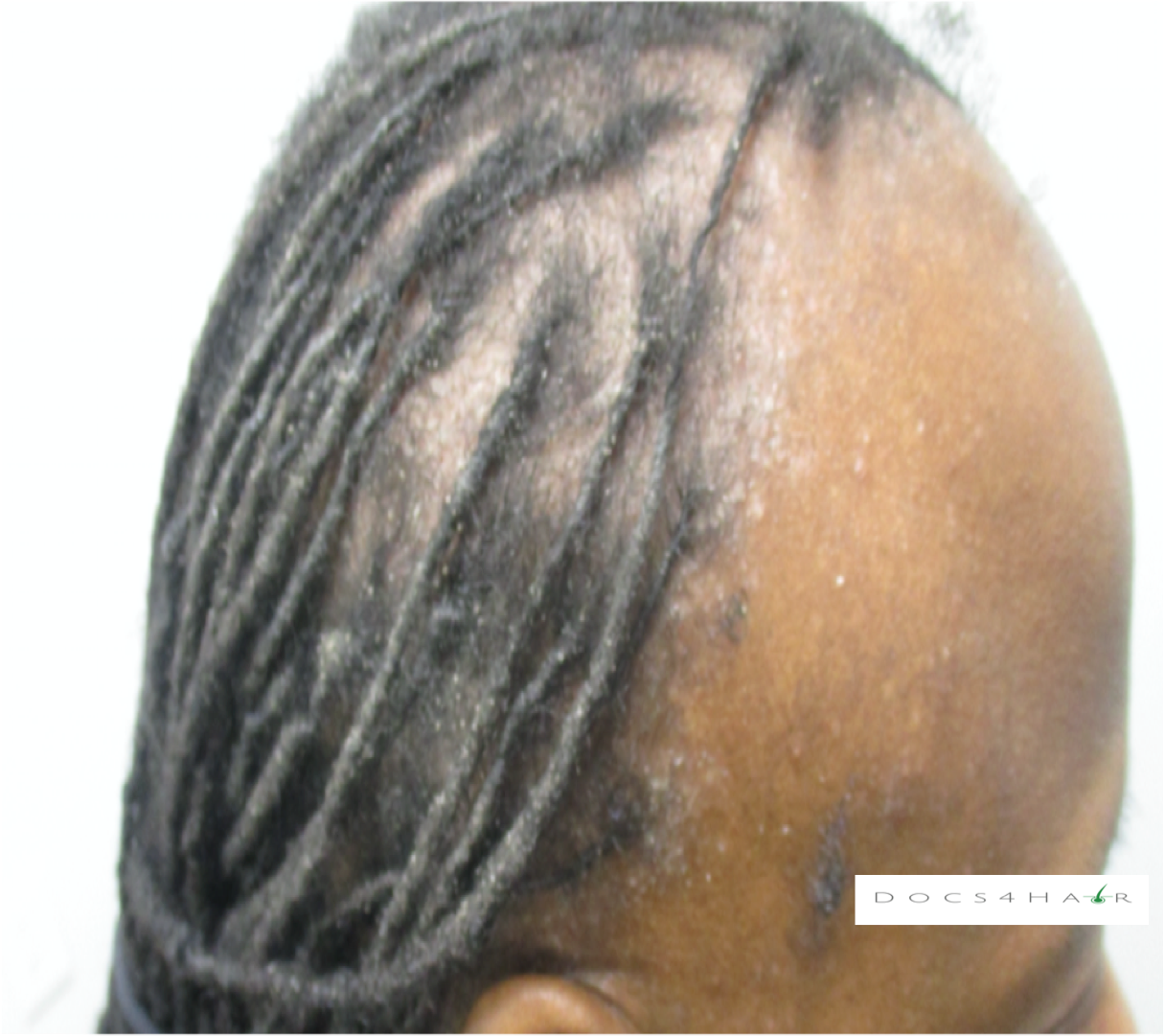Frontal Fibrosing Alopecia
Clinical Presentation
Frontal Fibrosing Alopecia (FFA) is a rare chronic primary lymphocytic scarring alopecia. It is a clinical variant of lichen planopilaris and was 1st described in 1994 (1). It presents with the progressive recession/ smooth balding of the frontal and temporal hairline (2). Hairline recession can occur at a rate of 0.6-1.1 cm/ year. The hair follicles in FFA may be surrounded by redness (perifollicular erythema) and scaliness (hyperkeratosis) (2). It can also be associated with eyebrow loss (75%), facial hair loss (more common in men (SN Tolkachjov), body hair loss (armpits/pubic region), small skin colored bumps and dark patches on the face (2). People with FFA usually don’t report any symptoms but there can be tightness, burning, or pain (1, 2, 3). Eyelash loss, facial bumps, and body hair involvement may be associated with severe FFA (3). Women of African descent tend to present with dark marks around the hair follicles, slate grey to brown patches in sun-exposed areas on the face (lichen planus pigmentosus), and have less body hair involvement (4, 5). FFA is often misdiagnosed as traction alopecia in this population (4, 5).
Epidemiology
The worldwide incidence of FFA has been increasing over the past decade (3, 6, 7, 8). FFA is more common in postmenopausal Caucasian women (2, 3, 9). Approximately sixteen percent of FFA cases occur in pre- or perimenopausal women (2, 3). The condition rarely affects men, occurring in approximately 3% of cases (2, 9, 10). Upwards of 12% of FFA cases occur in women of African descent (2). In this population, the majority are premenopausal (Dlova) Although the mean age of disease onset is 55, most people are older than 60 at the time of diagnosis (2). FFA is seen at very low rates Asian women (<2% of cases) (2).
Causes (3, 6, 8, 11)
The exact cause of FFA is unknown. However, some proposed mechanisms include genetic predisposition, autoimmune dysfunction, decreased levels of androgens (early menopause in 14%), reduction in peroxisome proliferator-activated receptor gamma (PPAR-γ) (12, 13), and environmental exposures (daily use of facial sunscreens (14, 15), leave on cosmetics (14, 15), exposure to alkylphenolic compounds),
Diagnosis (2)
FFA is diagnosed via careful history, clinical scalp and hair exam, and dermoscopic evaluation. Scalp biopsies may be performed to help confirm the diagnosis.
Clinical Imitators (Differential Diagnosis)(2)
Traction alopecia, discoid lupus, male/ female pattern alopecia
Associated conditions:
Skin (2, 3, 4, 5, 8): Vitiligo, lichen planus pigmentosus (dark brown grey pigmentation occurring in sun-exposed areas of the face, trunk, arm), lichen planus, and facial papules (small skin colored bumps on the face), rosacea
Systemic: Thyroid disease (hypothyroid), systemic lupus (2, 7, 8, 9, 11, 16)
Treatment Options
Early recognition is key to management. The goal is to halt/ stabilize the spread of disease and to relieve signs and symptoms. Hair regrowth is uncommon with the use of any topical and/ or oral medications. Moreover, spontaneous stabilization may occur regardless of treatment (9)
Active FFA: Hairline recession associated with red or brown scaly bumps around the follicle
5-alpha reductase inhibitors: Finasteride, dutasteride (8, 9, 17)
Anti-Inflammatory (3, 9, 16, 18): Oral antimalarials (hydroxychloroquine), steroids (systemic, topical/ injection), oral immunosuppressives (mycophenolate mofetil, cyclosporine), oral tetracyclines (tetracycline, minocycline, doxycycline), topical calcineurin inhibitors (tacrolimus and pimecrolimus),
Growth stimulants: Minoxidil (anagen phase promoter- topical) (4, 19, 20)
Other therapies: Excimer laser (19), platelet rich plasma (several studies used to treat lichen planopilaris- FFA variant,)
Hair grooming: Avoid wearing sunscreens and other facial skin care products close to the hairline (14). Avoid potentially damaging hair care practices such as traction/ tension hairstyles (weaves, wigs, braids, extensions, ponytails, etc.), chemical relaxers, excessive heat, hair bleaching, and hardening gels and sprays. The practices above may further compromise an already fragile hair and increase breakage. Follow-up with a hair care professional who is well versed on safe hair care practices.
End stage FFA: Irreversible scarred shiny areas of baldness, despite treatment
Scalp camouflage: Scalp micro-pigmentation, hair fibers, color stick, and scalp prosthesis (e.g. customized wigs).
Hair transplantation: Extreme caution should be exercised due to the possibility of disease reactivation and decreased efficacy (22, 23). Test grafts of 50-100 hair follicle units may be transplanted into non-active areas and monitored for a year before larger surgeries are attempted (24). If transplants are performed, at least one year of medical therapy and at least two years of remission/ stabilization of disease with no symptoms (redness, itching, pain, hair loss, etc.) off medications is preferred (24). Medication use after hair transplants is encouraged but is done at the discretion of the medical and surgical team.




